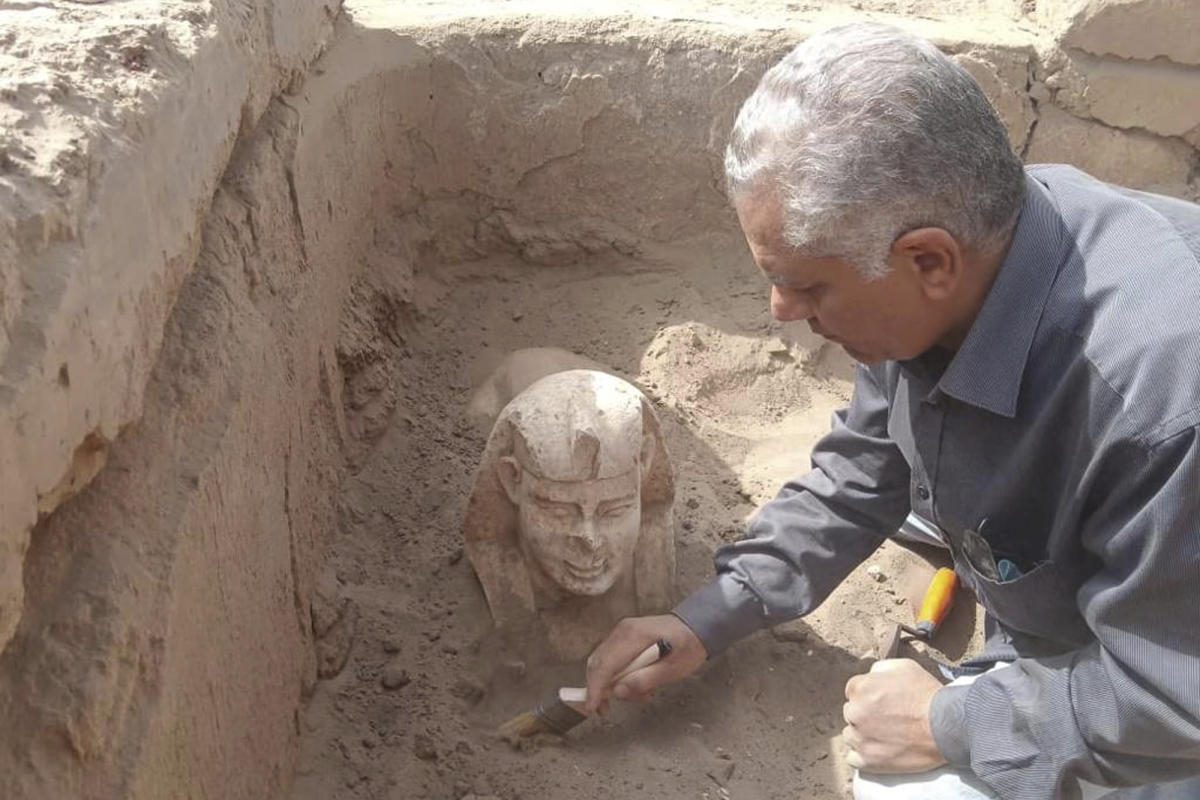CAIRO (AP) — Archaeologists have unearthed a sphinx-like statue and the remains of a shrine at an ancient temple in southern Egypt, antiquities authorities said Monday.
The artifacts were found at the temple of Dendera in Qena province, 450 kilometers south of the capital Cairo, the antiquities ministry said in a statement.
Archaeologists believe the statue’s smiling features may have belonged to the Roman Emperor Claudius, who expanded Rome’s rule into North Africa between AD 41 and 54, the ministry said.
It said archaeologists will conduct more research into the markings on the stone slab, which could reveal more information about the identity of the statue and the area. The statue is much smaller than the towering, well-known Sphinx in the Pyramids of Giza complex, which is 20 meters high.
The archaeologists also found a Roman-era stone slab with demotic and hieroglyphic inscriptions.
The limestone sanctuary includes a two-tiered platform and basin of Byzantine-era mudbricks, the ministry said.
Such discoveries are usually touted by the Egyptian government in hopes of attracting more tourists, an important source of foreign exchange for the poor North African country.

